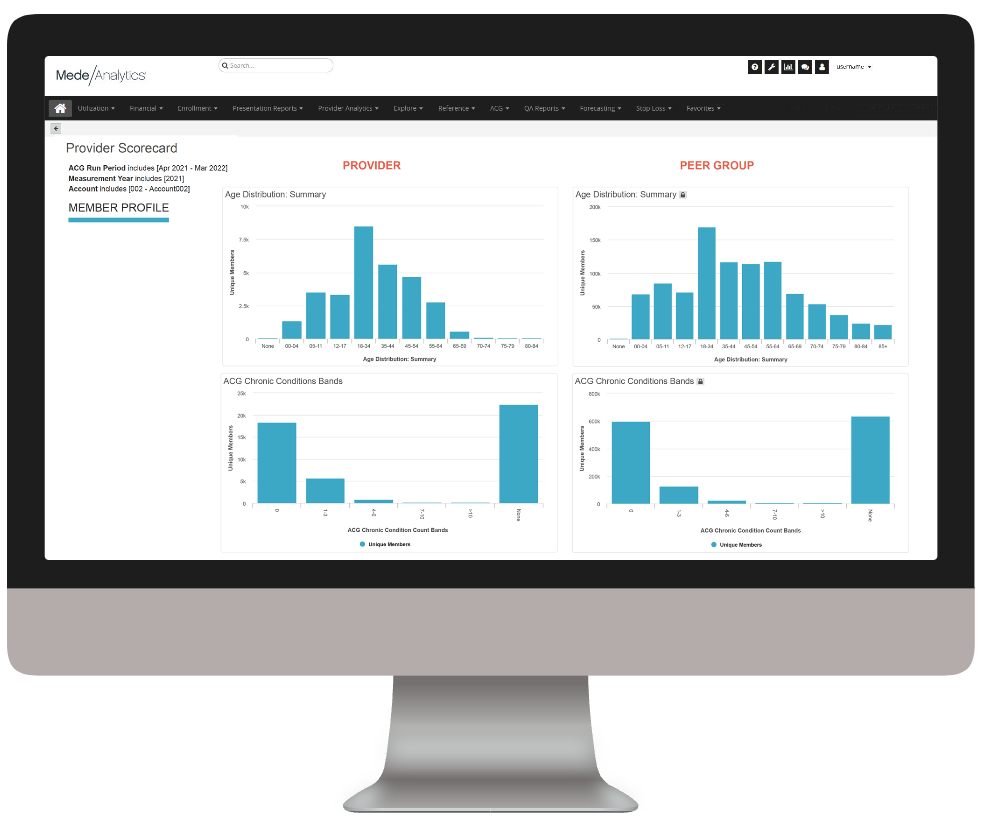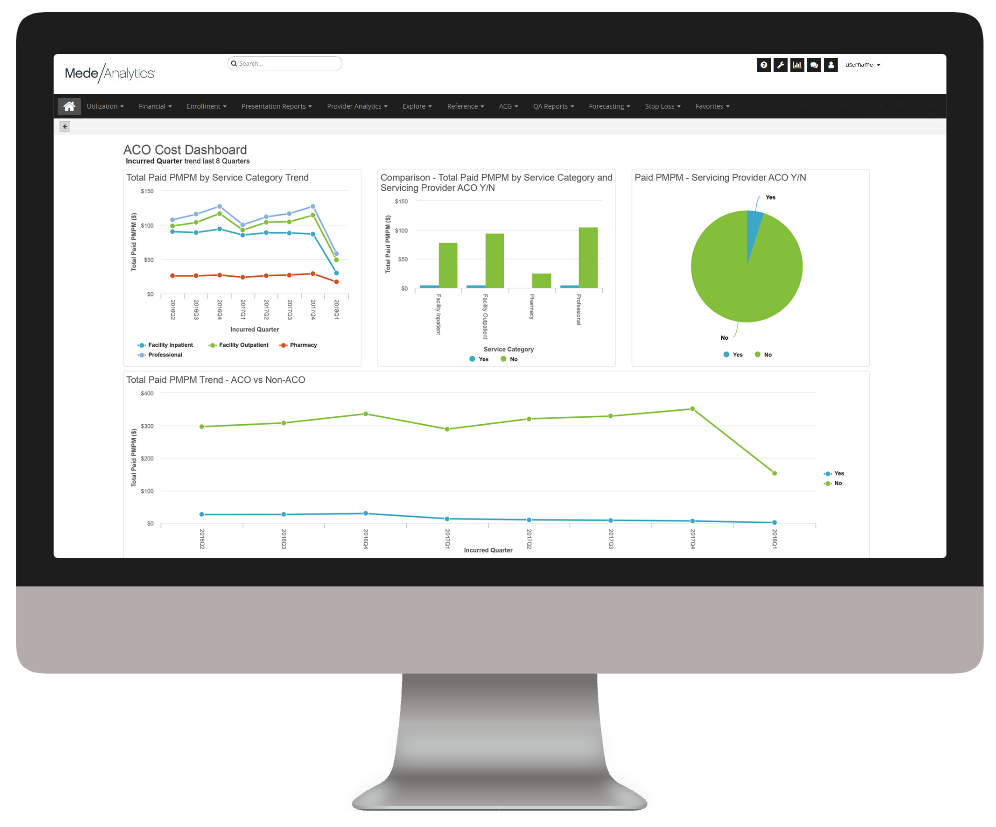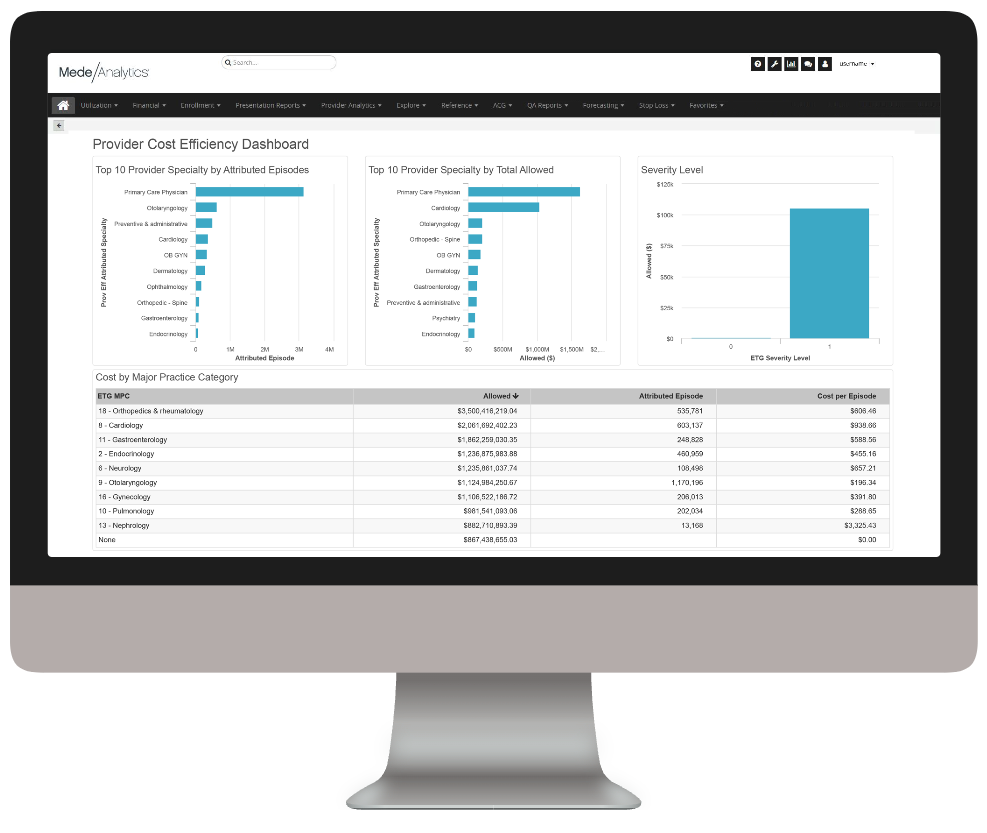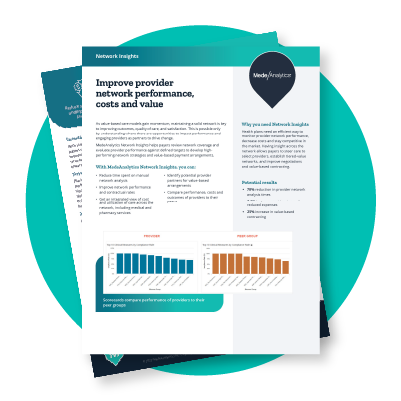
Network Insights
Monitor member coverage and provider outcomes to create high-performing provider networks
Executing network and provider performance analyses has historically been a very manual, time-consuming process with variable results. With value-based payment models expanding and focus on outcomes increasing, this method of monitoring is becoming obsolete. Smart health plans are replacing the manual work with automated, self-service analytics engines that offer an integrated view on network performance, provider patterns, cost of care and utilization trends.
Delivering comprehensive analytics solutions to strengthen your network
Challenge
Solution
Manual provider analysis processes consume significant time and resources unnecessarily
Challenge
Solution
Struggle to engage providers in performance improvement initiatives
Challenge
Solution
Difficulty adapting to value-based payment arrangements
Analytics in action
Our intelligent platform and intuitive user interface make it easy to unlock the value of your data. In as little as three clicks, we bring meaningful insights, powerful visualization, and analytics innovation to help you make an even bigger impact at your organization.
As you click through our example dashboards, hover over the image to explore a few key features.

Analyze provider performance by member age bands
Compare chronic condition counts between provider and peer group
Dive deeper into Network Insights
Download the data sheet to see how you can deploy Network Insights to build a strong network of the highest-performing providers.
Get our take on industry trends
Run: Bringing Data Science into your Organization
In this three-part series, we’ve been detailing a tiered approach to introducing and incorporating data science into your organization. In Part One: Crawl and Part Two: Walk, we discussed how to get started from scratch and start building out a dedicated data science program. Today, we’ll dive into the third and final phase to see how to grow quality, centralize governance, incorporate user feedback, and more.
Read on...Walk: Bringing Data Science into your Organization
In this three-part series, we’re exploring a tiered approach to introducing and incorporating data science into your organization. In Part One: Crawl, we discussed how to get started from scratch. Today in Part Two: Walk, we’ll address issues that may emerge and how to overcome them, how to build out a dedicated data science team, and more.
Read on...Crawl: Bringing Data Science into your Organization
Throughout my career as a data scientist, I’ve been lucky enough to have a few opportunities to build data science…
Read on...Tell the best healthcare story with data dashboards
By this point, we’ve all heard the statistic that healthcare data is growing at 36% annually. The result of this…
Read on...Want to talk with one of our experts?
Payer Value Analytics: Our full lineup of payer solutions
Everything you need to step into the future of healthcare and drive real change across populations.

Quality Insights
Activate insights into population health and quality to improve satisfaction and outcomes for members and maintain a competitive position in the market.

Employer Insights
Elevate data sharing with employer groups to demonstrate plan value and increase efficacy of risk stratification and care management plans.

Network Insights
Accelerate provider performance with evidence-based outcomes comparisons, cost-effectiveness analyses, and extensive segmentation capabilities.







